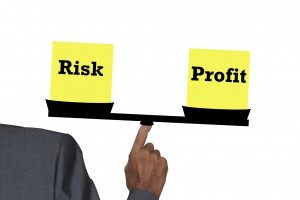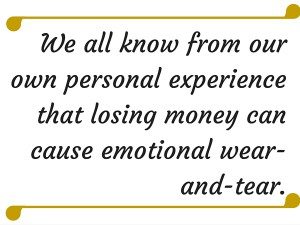Investing can be an emotional rollercoaster
January 28, 2016

During periods of stock market decline the one haunting and fearful question in most people’s minds is how much can the value of my portfolio decline.
Investing in stocks, or mutual funds that own stocks, assumes investment risk. That risk has no specific boundaries.
Last week’s column talked about the importance of discipline and acknowledged that the track record of individual investors at maintaining discipline in the past has been poor.
There is a popular saying that markets do well, unfortunately investors do not. Many investors buy high and sell low.
While the future is uncertain we can gain perspective from studying the past. That is the intent of this week’s article and we will use U.S. data.
Since 1926 until the end of last year the S&P 500 annual return had a negative return 27 per cent of the time. In other words, over 90 years investors lost money approximately one out of every four years. 
We all know from our own personal experience that losing money can cause emotional wear-and-tear. Add in the fear of losing money during years that we actually gain and we can easily see how difficult investing can be.
Sometimes, losing years have come back to back. From January 1929 until December 1932 the S&P 500 Index lost 64 per cent. From January 1973 until September 1974 the S&P lost 43%.
And more recently from April 2000 until September 2002 the S&P was down 44%.
To ask a rhetorical question, who in the heck would be silly enough to invest in the American stock market or in fact any stock market?
As it turns out, despite the battle scars from periods of decline, investing in the American stock market has been profitable. Investing in the S&P 500 from 1927 to 2015 provided a return of approximately 8 per cent over the return of investing in one month T-bills.
T-bills are the starting point for examining returns. They are the safest investment with the least risk, paying small returns.
Incrementally investors are rewarded for taking additional risk above that of a T-bill. The technical term for this is “equity risk premium”.
Investors are forced into a financial balancing act, determining their desired target return on investment and the amount of risk they can afford to take both financially and emotionally.
If you are an investor who would like the long-term returns of the stock market, but would prefer not to have losing years, then be careful what you wish for. It is the risk of losing that provides the opportunity for superior returns.
If the risk of investing in the stock market was as low as the risk of investing in T-bills then we could expect returns similar to that of T-bills.
Fortunately or unfortunately that is the way investing works.
The challenge for each and every investor is to understand the characteristics of stock markets and realize stock markets can be expected to provide both good and bad annual returns.
Investing can be an emotional roller coaster.
Our recommendation is to consider your long-term investment objectives and your financial and emotional ability to assume investment risk.
RELATED ARTICLES
